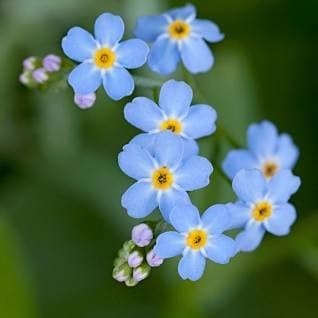ACRES – How will your Farm Score?
ACRES – How will your Farm Score? 06 June 2023 Type Media Article By Joanne Masterson, ASSAP Advisor, Teagasc Galway/Clare The Agri-Climate Rural Environment Scheme (ACRES) is Ireland’s new agri-environment climate scheme under Ireland’s CAP Strategic Plan. This new €1.5 billion flagship agri-environment scheme is to address biodiversity decline while delivering an income support. Some […]
By By Joanne Masterson, ASSAP Advisor, Teagasc Galway/Clare
ACRES – How will your Farm Score?
Type Media Article
By Joanne Masterson, ASSAP Advisor, Teagasc Galway/Clare
The Agri-Climate Rural Environment Scheme (ACRES) is Ireland’s new agri-environment climate scheme under Ireland’s CAP Strategic Plan. This new €1.5 billion flagship agri-environment scheme is to address biodiversity decline while delivering an income support. Some 46,000 farmers have signed up for the scheme. Over the next few months farmers will become more familiar with actions that are on their ACRES plan and also become more familiar with positive indicator plant species growing on their farms. Farmers in the ACRES scheme will be either in ACRES General or ACRES Co-operation which is available to farmers in defined high priority geographical areas, and involves results-based payments as well as bespoke farm and landscape actions.
In the coming months Advisors will be visiting farms and scoring parcels which have been allocated as grassland, peatland, scrub/woodland parcels. In the past few weeks participants received the scheme approval summary, which shows where actions have been mapped on the participant’s farm and a farmland plant identification key booklet.
In this booklet plant species are divided into four sections – positive grassland indicators, positive peatland indicators, negative indicators and invasive alien species. The booklet is very user friendly and it will be a great guide for farmers to identify if they have some of these positive indicators on their land and also to identify some of the negative indicators. There are also some mobile apps available which you can use to help identify flowers on your farm (such as Flora Incognita/PictureThis). There will also be ACRES training courses which will give farmers an overview of the scheme, the actions and also scorecards.
For the summer months it is a good time to check what native wildflowers are growing on your farm especially in areas where farming is less intensive and non-farmed areas such as field margins/watercourse margins. Wildflowers are vital for our wild bees and other pollinating insects. Pollinators need flowers to feed on from spring through to autumn.
Having wildflowers available across the season will help pollinators survive throughout their annual lifecycle. Wild bees need an uninterrupted source of wildflowers for food. Additional flowers are particularly important in summer after hedgerows have finished flowering.
Some of you may have noticed the abundance of Hawthorn blossom this year, which may be caused by a number of factors such as a wet spring, or a combination of weather factors. This blossom may bode well for autumn/winter berries if there are enough pollinators.
So with all that in mind, let’s look at the scorecards that will be used for grading results-based actions. Fields are assessed through questions on a score card and given a quality score. The score card is comprised of positive and negative results indicators for measuring the total biodiversity present. Threats or risks to the ecological integrity or the future conservation quality of the field are also assessed and marked. Payment received is linked to the quality of the environmental outcome delivered rather than particular rules or actions.
There are a number of different scorecards. Two of these will be used in ACRES General only, for the low input grassland and low-input peat grassland actions (these two scorecards are identical). Participants who are taking this action can also apply for a €50/ha late meadow bonus. One scorecard will be used in ACRES Co-operation only, to measure ecological integrity of grassland, peatland and woodland/scrubland. Other scorecards may also be added depending on the habitat in question.
The scorecards will cover areas such as:
What is the number of positive indicators in the field – this is where the advisor ticks what positive grassland/peatland/woodland indicators that they observe on their visit. They also have to decide what proportion of the field is taken up by all the positive indicators present. The payment rate is based on how it scores, up to a maximum of €450 per hectare, including the bonus of €50 for late-mown meadows. The level of cover of these indicator flowering plants is also important. Where they are dominant, or over 50% of the field, the maximum score of 25 is awarded, but if they are rare or only 5% of the field, no marks are awarded for cover.
Not all flowers are relevant. Those found in agriculturally improved grassland, such as chickweed or dandelions for example, don’t count. Vegetation structure is also assessed. A good structure is where the sward in over 50% of the field has a variety of taller and/or shorter sward with medium height sward throughout, with positive indicator plants flowering. Such good vegetation structure is awarded the maximum 25 marks. Both overgrazing and undergrazing are penalised, as they do not provide habitats where biodiversity can thrive.
A field is regarded as overgrazed when the sward is short throughout the grazeable area, with little variation in the height of vegetation Undergrazing results in rank vegetation across much of the field, with leaf litter accumulating and scrub encroaching.
Threats and pressures include the expansion of immature scrub, bracken, invasive alien species, bare soil and erosion and artificial drainage. Where these threats and pressures are not evident, you gain up to 25 marks, but their presence is negatively marked. Damaging activities to vegetation or soil are penalised, even where a small area is affected. Examples include quarrying, dumping, supplementary feeding, burning, herbicide or slurry spreading. Any evidence of damage to watercourses is also negatively marked.
Payment Rates:
| Grassland, Peatland, Scrubland – Results Based payment | ||||||||
|---|---|---|---|---|---|---|---|---|
| Field Score | 10 | 9 | 8 | 7 | 6 | 5 | 4 | <4 |
| Payment Rate | €400 | €350 | €300 | €250 | €205 | €175 | €150 | €0 |
By having a look now on your own farm to see what positive indicators you can find will make you more familiar with what is growing on your farm and give you an idea of how the farm will score.

Forget-me-not is one of the positive grassland indicators to look out for. The yellow ring at the flowers centre fades to white after pollination – signalling to insects there is no more nectar. Insects therefore learn to visit the flowers that haven’t yet been pollinated.
